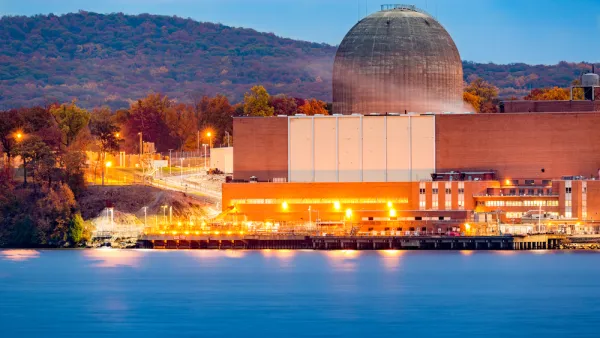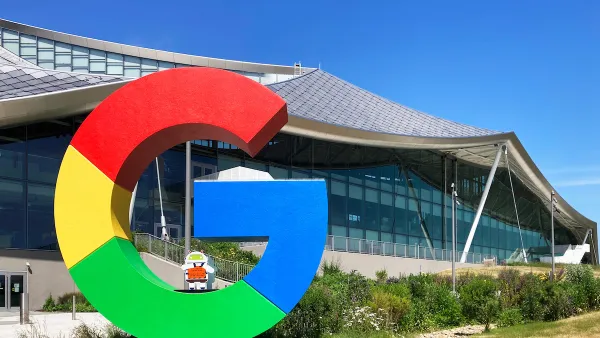Google is big business in Mountain View, but it's located in a cul-de-sac business park two miles from the city's transit center. "Personal rapid transit" may be the answer to solving the company's commuting challenges.
Like the rest of the Bay Area, Mountain View is investing heavily in public transit, as evidenced by the fact that the downtown transit center is a hub for both Caltrain and the San Jose light-rail line. But the North Bayshore area – locale for the Google headquarters as well as offices for such companies as LinkedIn, Intuit, and even Microsoft – is two long miles away up Shoreline Boulevard, on the wrong side of a constrained overpass that spans Highway 101 and boxed in by the San Francisco Bay and the former Moffett Field Naval Air Station.
At a transportation workshop last Friday, four experts from around the country provided ideas for Mountain View and Google to consider as the city embarks upon the North Bayshore Precise Plan. The ideas ranged from the obvious – charging employees for parking – to the far-out, such as a "personal rapid transit" system that would whisk employees to and fro within the North Bayshore area, to and from the transit center, and possibly to other destinations as well.
Thanks to Bill Fulton
FULL STORY: Google and Mountain View May Pursue "Personal Rapid Transit" To Solve Commute Congestion

National Parks Layoffs Will Cause Communities to Lose Billions
Thousands of essential park workers were laid off this week, just before the busy spring break season.

Retro-silient?: America’s First “Eco-burb,” The Woodlands Turns 50
A master-planned community north of Houston offers lessons on green infrastructure and resilient design, but falls short of its founder’s lofty affordability and walkability goals.

Delivering for America Plan Will Downgrade Mail Service in at Least 49.5 Percent of Zip Codes
Republican and Democrat lawmakers criticize the plan for its disproportionate negative impact on rural communities.

Test News Post 1
This is a summary

Test News Headline 46
Test for the image on the front page.

Balancing Bombs and Butterflies: How the National Guard Protects a Rare Species
The National Guard at Fort Indiantown Gap uses GIS technology and land management strategies to balance military training with conservation efforts, ensuring the survival of the rare eastern regal fritillary butterfly.
Urban Design for Planners 1: Software Tools
This six-course series explores essential urban design concepts using open source software and equips planners with the tools they need to participate fully in the urban design process.
Planning for Universal Design
Learn the tools for implementing Universal Design in planning regulations.
EMC Planning Group, Inc.
Planetizen
Planetizen
Mpact (formerly Rail~Volution)
Great Falls Development Authority, Inc.
HUDs Office of Policy Development and Research
NYU Wagner Graduate School of Public Service




























